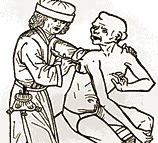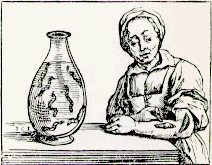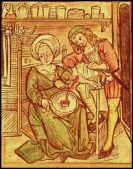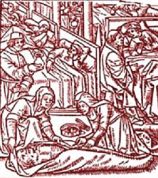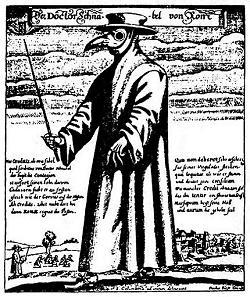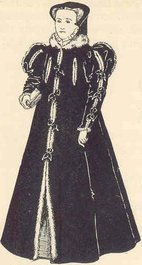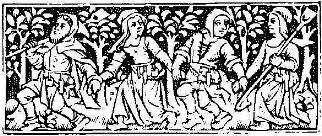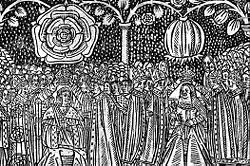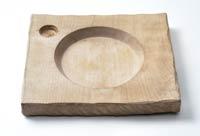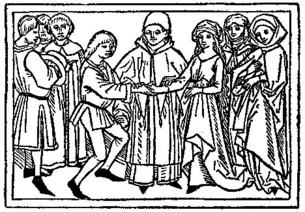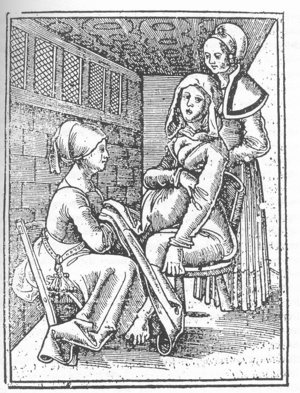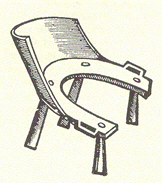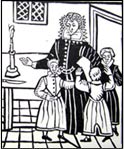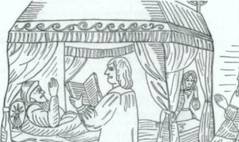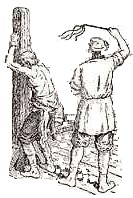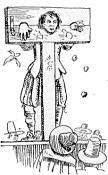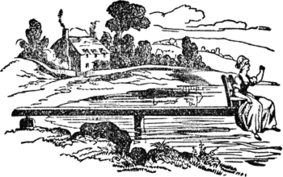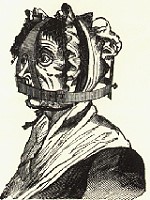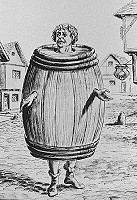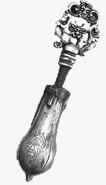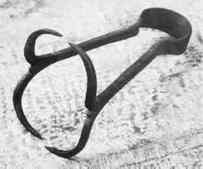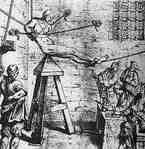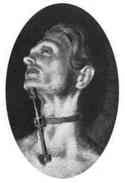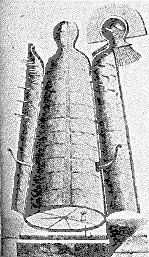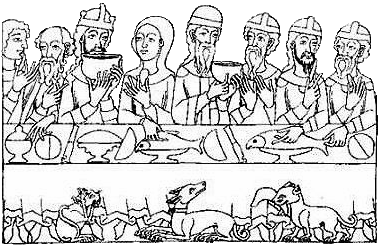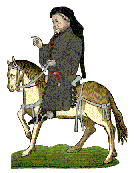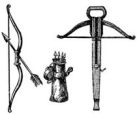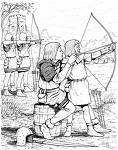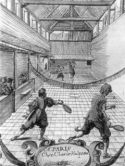Tudor Historical Trivia
Jump to navigation
Jump to search
| <embed height="250" src="http://widget.wetpaintserv.us/wiki/thetudorswiki/page/Tudor+Historical+Trivia/widget/youtubevideo/1737f9e54f3d1e1ec20011ad19e3f91bbf6aba29" type="application/x-shockwave-flash" width="347" wmode="transparent"/> | <embed height="254" src="http://widget.wetpaintserv.us/wiki/thetudorswiki/page/Tudor+Historical+Trivia/widget/youtubevideo/ea59f14ee23ba0f7e81d8cdc618594d9e612b809" type="application/x-shockwave-flash" width="332" wmode="transparent"/> |
| Want to add to this page? Click EasyEdit to update this page! (Don't see the EasyEdit button above? <a href="/#signin" target="_self">Sign in</a> or <a href="/accountnew" target="_self">Sign up</a>.) |
| | Plague doctor The Plague Doctor wore a distinct "uniform". His hat was made of leather and was worn for added protection for the head. The mask covered the entire head and was gathered at the neck. The beak, which was attached to the mask, was stuffed with herbs, perfumes or spices to purify the air that the doctor breathed when he was close to the patients. His gown was full length and made out of a thick material that was then covered with wax. The breeches he wore underneath were made of leather. His gloves were also made of leather to protect his hands from any contact with the disease. He would always carry a wooden stick so that he could drive away people who were getting too close to him. His boots were full length as well. |
| Pic | Pic |
| | |
| DRESS |
| 1.) A common accessory to Tudor dress was a patch of fur worn near the neck: a flea patch to discouraged the pesky nuisances from residing on the hair or skin. |
| 2.) The heavy white makeup that Elizabeth I is famously depicted as wearing had high amounts of lead in it, which could lead to lead poisoning over time. |
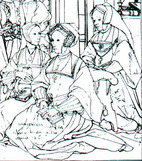 3.) The way women dressed was strictly controlled. Women who were not married could wear their hair loose. Married women had to hide their hair away under a veil and a hood. Queens might wear their hair loose on state occasions, but this was only tolerated because they had to wear a crown. Queen Katherine of Aragon and Queen Anne Boleyn both had hair long enough to sit on – but despite Anne's forceful nature, even she did what was expected of her and wore her hair in a hood after her marriage to King Henry VIII. 3.) The way women dressed was strictly controlled. Women who were not married could wear their hair loose. Married women had to hide their hair away under a veil and a hood. Queens might wear their hair loose on state occasions, but this was only tolerated because they had to wear a crown. Queen Katherine of Aragon and Queen Anne Boleyn both had hair long enough to sit on – but despite Anne's forceful nature, even she did what was expected of her and wore her hair in a hood after her marriage to King Henry VIII. |
| 4.) 16th century women didn't wear knickers. However, men sometimes wore linen shorts. Linen was used to make shirts and underwear, but only the rich could afford cotton and silk. Women wore a kind of petticoat called a smock or shift or chemise made of linen or wool with a wool dress over it. All classes wore wool, but it varied in quality. The rich, of course, wore fine quality wool & the poor wore coarse wool. |
| 5.) Everyone wore hats. Poor women wore a linen cap called a coif. Men wore woolen caps. Buttons were usually for decoration and clothes were held together with laces or pins |
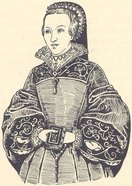 6.) There were Sumptuary laws which governed what each class could or could not wear, and only persons of a certain rank could wear velvet or silk. Sumptuary laws are defined as "Laws made for the purpose of restraining luxury or extravagance, particularly against inordinate expenditures in the matter of apparel, food, furniture, etc." These laws dictated what color and type of clothing, furs, fabrics, and trims were allowed to persons of various ranks or incomes. In the case of clothing, this was intended, amongst other reasons, to reduce spending on foreign textiles and to ensure that people did not dress "above their station". Imagine living in a society where there are laws in place that dictate what foods you are allowed to eat, what color clothing you are allowed to wear, and even how much you are allowed to spend on a daughter’s wedding. If you were to break any of these rules, you would be fined and possibly imprisoned. 6.) There were Sumptuary laws which governed what each class could or could not wear, and only persons of a certain rank could wear velvet or silk. Sumptuary laws are defined as "Laws made for the purpose of restraining luxury or extravagance, particularly against inordinate expenditures in the matter of apparel, food, furniture, etc." These laws dictated what color and type of clothing, furs, fabrics, and trims were allowed to persons of various ranks or incomes. In the case of clothing, this was intended, amongst other reasons, to reduce spending on foreign textiles and to ensure that people did not dress "above their station". Imagine living in a society where there are laws in place that dictate what foods you are allowed to eat, what color clothing you are allowed to wear, and even how much you are allowed to spend on a daughter’s wedding. If you were to break any of these rules, you would be fined and possibly imprisoned.*click here to see basic chart of Tudor Sumptuary laws for Dress* |
| 7.) The Tudors used mostly vegetable dyes such as madder for red, woad for blue or walnut for brown. A chemical called a mordant was used to 'fix' the dye.The most expensive dyes were bright red and black.The fur used on clothing could be cat, rabbit, beaver, bear, badger or polecat. |
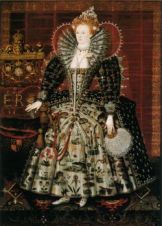 8.) Women often wore a stomacher, which was a decorative triangular panel filling in the front opening of her gown or bodice. It could be boned and part of the corset, or it could just cover the front of the corset. Decorative ones could be sewn or pinned into place or attached with lacings on the gown's bodice. 8.) Women often wore a stomacher, which was a decorative triangular panel filling in the front opening of her gown or bodice. It could be boned and part of the corset, or it could just cover the front of the corset. Decorative ones could be sewn or pinned into place or attached with lacings on the gown's bodice. |
| | |
| | |
| | |
| | |
| |
| 1.) Royal courtship usually contained letters of declaring love, symbolic gifts, and jewelry <a class="external" href="http://tudors.crispen.org/tudor_women/" rel="nofollow" target="_blank" title="(Tudor women)">(Tudor women)</a> |
| 2.) There was no legal age to marry, but 14 was a common age at which a girl was married off. No one questioned it since women were only expected to live to about 30. <a class="external" href="http://tudors.crispen.org/tudor_women/" rel="nofollow" target="_blank" title="(tudor women)">(Tudor women)</a>During the Tudor Era, young women could be married as young as 12, or around the time their menstrual cycles first began. In the homes of the poor, there was almost a rush to marry off daughters, as it was believed that once they reached a certain age – about 14 – they would have been seen as being too old for marriage, and therefore a liability at home - one extra mouth to feed and no extra income coming into the house. |
| 3.) Young ladies from a rich family would have no choice over who their husbands would be. Marriages were frequently arranged so that the families involved would benefit – whether the young lady loved her future husband was effectively irrelevant. |
| 4.) Betrothal was the vital step in laying the basis for a marriage which united not only two individuals, but two families; sexual intercourse frequently preceded the actual wedding. Something like a quarter of brides went to the altar pregnant, yet the fact that illegitimacy rates represented only about 2 per cent of births suggests the seriousness with which childbearing was taken. Whether such caution was due to an internalization of Christian ethics or a fear of social ostracism made little difference. Sexual self-control was clearly an ingrained form of rational behavior |
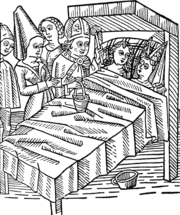 5.) The newly married couple were put into bed by the guests and blessed by a priest. (Tudor<a class="external" href="http://tudors.crispen.org/tudor_women/" rel="nofollow" target="_blank" title="tudor women"> women</a>) 5.) The newly married couple were put into bed by the guests and blessed by a priest. (Tudor<a class="external" href="http://tudors.crispen.org/tudor_women/" rel="nofollow" target="_blank" title="tudor women"> women</a>) |
| 6.) Men expected to rule over their wives. It was thought that a man could shape and make a wife to his will, and a loving, virtuous, and obedient wife was a gift from God. (Tudor<a class="external" href="http://tudors.crispen.org/tudor_women/" rel="nofollow" target="_blank" title="tudor women"> women</a>) The law gave a husband full rights over his wife. She effectively became his property. A peer could have his adulterous wife burned at the stake if the king/queen agreed. A wife who killed her husband did not commit murder – she committed the far worse crime of petty treason. This also led to her being burned at the stake. Wife beating was common and the logic of Tudor England was that the wife would have provoked her husband into beating her, and if she had behaved properly, he would not have beaten her. Therefore, she herself was responsible for her beating! |
| 7.) Consummation of marriage at an early age was discouraged, however. It was thought to cause infertility or limit the number of pregnancies. Margaret Beaufort had given birth to the future Henry VII while only 13, and had never conceived again. This was blamed on a too-early consummation of the marriage. |
| 8.) Once married, the main function of a wife was to produce a son to continue the family line. This was true for royalty right down to the common peasant. It would not have been unusual for wives to be pregnant every twelve months. |
| |
| |
| |
| WOMEN & CHILDBIRTH |
| 1.) Girls were raised to obey their parents without question <a class="external" href="http://tudors.crispen.org/tudor_women/" rel="nofollow" target="_blank" title="(tudor women)">(Tudor women)</a>. For centuries, girls had been told, even if educated, that they were inferior. So by the time they became women, they would have accepted and behaved as though they were inferior to men. The Church taught this and used the Bible to justify this belief. If men of God said that women were inferior, it had to be true. So both sections of society grew up believing the same thing. Both men and women believed that women were inferior to men and that this was ordered by God. No change came with the Reformation. As a father dominated a household, this basically meant that the girls grew up to instinctively obey men. Even uncles, older brothers and male family friends could expect instant obedience from girls. NOTE: The above statement is disputed by many early modern scholars today. For one, nutrition was poor enough so that women largely did not begin their menses before they were 16. Second, marriage was often postponed to allow for poor economic conditions, the later one married, the fewer children one had, and thus food was more available. Wealthier girls in the Tudor era married at the younger ages, but only because nutrition, economics, and society's expectation made it permissible. Many scholars argue that most early modern women did not marry until their 20s. |
| 2.) Girls were taught that their only function in life was to marry and bear children. They learned that they were commanded by God to give unquestioning obedience to their husbands and learn through him by silence. <a class="external" href="http://tudors.crispen.org/tudor_women/" rel="nofollow" target="_blank" title="(tudor women)">(Tudor women)</a> |
| 3.) Many women and babies died in childbirth <a class="external" href="http://tudors.crispen.org/tudor_women/" rel="nofollow" target="_blank" title="(tudor women)">(Tudor women)</a>.The actual act of childbirth was assisted by a ‘midwife’. In fact, this was usually an elderly female relative or female neighbour with no medical knowledge. Complications were frequent and death not unusual in childbirth, but no proper doctors existed in Tudor times to change this. Even if a delivery of a baby was successful, the mother could still fall prey to illness due to the lack of hygiene during childbirth. For example, pig fat was often used to assist in lubrication. The most famous Tudor casualty of this was Jane Seymour who died after successfully giving birth to Prince Edward Tudor. Puerperal fever and post-birth infections were both killers. |
| 4.) When it can time for them to deliver, well-born ladies retired to their "confinement" quarters. During this time, they were virtually secluded away from the world of men. Common women were assisted by the women of their community, also away from the presence of men. The atmosphere inside could be quite festive if the birth went well, with drinks and food available. |
| 5.) During the birth, windows were covered with dark tapestries because it was thought the incoming light and air could be bad for the mother and child. |
| 6.) A woman could not leave her confinement, nor have sex with her husband again until after she had been "churched", the "cleansing" of women after the "unclean" process of childbirth. This was to serve as a blessing and thankful time for her survival, and to protect her from outside elements. A woman was churched even if she miscarried or the child was stillborn. |
| 7.) While the King could enter his Queen's apartments at anytime he liked, she had to have permission to enter into his. |
| 8.) Midwives were often called to be legal witnesses because of their standing in the community, and to inspect women sentenced to death for signs of pregnancy. They were also the most common person to be accused of witchcraft. |
| 9.) Even into the Tudor era, it was accepted that all that was needed to complete a marriage was an oath between two partners and consummation. This was likely done to discourage sex outside of marriage, although plenty of early modern couples likely committed the deed without committing to marriage. |
| Birthing Chair: Woodcut from Der Swangern Frawen und he bammen roszgarten, by Eucharius Rösslin, 1513 |
| |
| 1.) Privileged children like those of Henry VIII's and Thomas More's were given a Renaissance education. This included instruction in the classical and modern court languages, math, science, astronomy, musical composition, and religion, among other things. There were exceptions in the upper class for how of this type of education was dispersed to girls, however. |
| 2.) Among learning to at least read and write their name, girls of the upper class were instructed in housewifely accomplishments like needlework, music, and art. Girls from a poor home received no education as we would recognise it. They learned skills for life from their mothers. Girls from the homes of the rich received some form of education, but it was in things like managing a household, needlework and meal preparation. It was generally believed that teaching girls to read and write was a waste of time. Two of King Henry VIII's wives were barely literate – Jane Seymour and Katherine Howard. |
| 3.) |
| 4.) |
| DEATH |
| 1.) The heir to the throne was not allowed to attend the funeral of the deceased monarch. |
| 2.) It was treasonous to speak of or consider the death (either natural or sinister) of a monarch. |
| 3.) |
| 4.) |
| CRIME & PUNISHMENT (including methods of execution) *for more about the list of executions during the Tudor period click here * |
| 1.) Since there were no police during Tudor times, laws were harsh and wrongdoing was severely punished. In Tudor times, the punishments were very, very cruel. People believed if a criminal’s punishment was severe and painful enough, the act would not be repeated and others would be deterred from crime as well. It was during the time of the Tudors that the use of torture reached its height in England. Under Henry VIII, torture was frequently used. When Edward and Mary were on the throne, torture wasn't used as much. However, when Elizabeth took the throne, torture was used more than in any other period of history. Queen Elizabeth thought that treason was one of the worst crimes that could be committed, and the majority of incidents of torture were for reasons of high treason. Lords and high officials were exempted, and woman were rarely put through torture. |
| 2.) Those condemned to burning were sometimes strangled first to "spare" them the suffering of the flames. |
| 3.) Those condemned to burning were usually charged for heresy or witchcraft. It was believed that by feeling the flames, they could be made to repent for their sins before they met God. |
| 4.) The axe-man's payment was typically the clothes that the condemned wore. Axe-men formally asked for the forgiveness of those they executed before they struck off their heads. The condemned sometimes gave their executioner a coin for payment in hopes they would "strike true." |
| 5.) If a person was executed for treason, all of their lands and possessions could be forfeit to the Crown. The full punishment for the crime of high treason was to be hanged, drawn and quartered, in that the condemned prisoner would be first dragged on a hurdle (a wooden frame) to the place of execution. (This is one possible meaning of drawn.) They were then hanged by the neck for a short time or until almost dead. (hanged). They were then disemboweled & emasculated and the genitalia and entrails burned before the condemned's eyes. They were then beheaded and the body divided into four parts (quartered). Typically, the resulting five parts (i.e. the four quarters of the body and the head) were gibbeted (put on a spike for public display) in different parts of the city, town, or, in famous cases, in the country, to deter would-be traitors who had not seen the execution. Women found guilty of either treason or petty treason were sentenced to be burned alive at the stake. |
| 6.) For attempting to murder someone, you could be boiled alive in a big bowl of hot water. |
| 7.) People were hung for crimes such as stealing, treason, rebellion, riot or murder. |
| 8.) Whipping (flogging) Many towns had a whipping post. The victim was chained to the post, stripped to the waist and whipped.You could be whipped for stealing a loaf of bread! You could also be hanged, so whipping was considered a leniency. |
| 9.) Branding with hot irons. Hot irons were used to burn letters onto the skin of offender's hand, arm or cheek. A murderer would be branded with the letter 'M', vagrants with the letter 'V', and thieves with the letter "T". |
| 10.) The pillory (standing) The pillory was a T shaped block of wood with holes for the hands in the crossbar of the T. The person being punished would have to stand in the device in the middle of the market to be ridiculed by passersby. The stocks (sitting) Stocks were used in the same way as the pillory, except that with stocks, the feet were bound. The stocks were a block of wood with two holes for your feet to go in.You were put in the stocks for selling bad meat or bread. Local people threw rubbish and rotten eggs at people in the stocks. You could be put in the stocks for not wearing a hat on Sunday! |
| 11.) The ducking stool (Punishment for women) Accused witches were dunked into a river, to see if they were innocent or guilty. If they floated, they were considered guilty and burnt at the stake. If they sank, they were innocent but died anyway, by drowning. Either way, they perished. |
| 12.) The Brank, (the gossip's bridle) The brank was a punishment enacted on women who gossiped or spoke too freely. It was a large iron framework placed on the head of the offender, forming a type of cage.There was a metal strip on the brank that fit into the mouth and was either sharpened to a point or covered with spikes so that any movement of the tongue was certain to cause severe injuries to the mouth. |
| 13.) Limbs cut off. Some people who stole things from shops had their hands cut off. |
| 14.) The Drunkard's Cloak This was a punishment for public drunkenness. The drunk was forced to don a barrel and wander through town while the villagers jeered at him. Holes were cut in the barrel for the person's hands and head, causing it to become like a heavy, awkward shirt. |
| RELIGION |
| 1.) People who did not go to church could be arrested. Churchwardens could check up on people to make sure they went to church. |
| 2.) |
| 3.) |
| CORONATIONS |
| 1.) Coronations of monarchs were performed by the Archbishop of Canterbury. |
| 2.) Those with titles wore coronets to coronations, which had designs that displayed their rank or their relation to the current monarch. |
| 3.) During a Queen or King's ceremony, the Sovereign receives the royal scepter and sphere of the crown, which represent the Holy Spirit and Jesus Christ, respectively. Once the Sovereign is officially sworn into the throne, the Archbishop of Canterbury places the crown of St. Edward atop their heads. |
| 4.) |
| |
| 1.) Crosses were sometimes painted near corners of palaces to discourage men from "relieving" themselves there. |
| 2.) The Royal family moved between palaces not only because it offered a change of venue, but also so their homes might be cleaned from huge accumulated messes. |
| 3.) In 1526, the Ordinances of Eltham were drawn up to help control the people allowed at court. These ordinances included: 1. No one is allowed to have greyhounds or other dogs at court, except for a few small spaniels for the ladies. 2. No person could bring to court more servants than was allowed for his rank. 3. The boys who worked in the kitchen could not go naked or wear scruffy clothing; nor could they sleep in the kitchen or by the fireside at night. 4. The only people permitted to enter the King's bedroom were the Marquis of Exeter, six waiters, two ushers, four grooms, the barber and a page. |
| 4.) |
| |
| 1.) One-third of the people living in England during the Tudor era were poor. |
| 2.) Poor people could not hunt without permission. The game on noble and royal lands were restricted, and those caught could face severe punishments. |
| 3.) There were even rules about what common people were allowed to wear, at least color-wise (for example, only royalty could wear purple).*click here to see basic chart of Tudor Sumptuary laws for Dress* |
| 4.) |
| | |
| | |
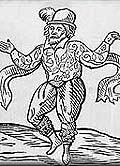 ENTERTAINMENT (music, sports, pastimes etc) |
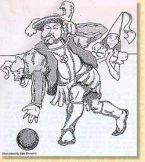 1.) In Tudor England, sport was heavily controlled by the government. The ordinary citizen rarely had a chance to take part in sport as the government considered it more important that they were fit enough to work. Most of their waking hours involved work of some sort, so time for sport was a rarity. In the early years of the reign of King Henry VIII, a law was passed in 1512 that banned the ordinary person from a whole range of games such as real tennis (as favoured by the King), cards, dice, and bowls and skittles. It was only at Christmas that rules were slightly relaxed in celebration of a religious holiday. 1.) In Tudor England, sport was heavily controlled by the government. The ordinary citizen rarely had a chance to take part in sport as the government considered it more important that they were fit enough to work. Most of their waking hours involved work of some sort, so time for sport was a rarity. In the early years of the reign of King Henry VIII, a law was passed in 1512 that banned the ordinary person from a whole range of games such as real tennis (as favoured by the King), cards, dice, and bowls and skittles. It was only at Christmas that rules were slightly relaxed in celebration of a religious holiday. |
| 2.) Football (soccer) was very different in Tudor England when compared to the game today. There was no limit to the number of people on each side and the goalposts were set about one mile apart. The rules also allowed those playing to pick up and throw the ball as well as kick it into the opponent's net. These games were rough and many young men were hurt while playing it. These casualties were invariably those who might be needed for the army - young, fit men. So in 1540, football was banned. |
| 3.) Such was the attempt to control the lives of the working class, that in 1542 even shuffleboard was banned - a game which we now call 'shove half-penny'. The general view was that the working class should spend their time at home or at work, and that any form of games might get out of hand and the authorities might lose control of the population, so they controlled them purely over a game. Dice, cards, etc., were banned as they might have encouraged gambling, which in turn might have got out of hand and caused trouble within a community. However, there were no rules or regulations stopping the rich from taking part in what they saw as sport. |
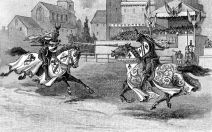 4.) Jousting was a popular pastime especially enjoyed by the King. Only the nobility were allowed to take part in jousting tournaments, though Henry had to retire from the sport when he was seriously injured in a jousting tournament in 1536. Also, only noblemen played real tennis - one of the oldest of all racquet sports. 4.) Jousting was a popular pastime especially enjoyed by the King. Only the nobility were allowed to take part in jousting tournaments, though Henry had to retire from the sport when he was seriously injured in a jousting tournament in 1536. Also, only noblemen played real tennis - one of the oldest of all racquet sports. |
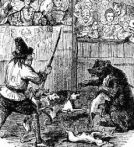 5.) Bear-baiting and ****- fighting were very popular. King Henry VIII and Queen Elizabeth I are both known to have attended bear-baiting events. A ring was built in the grounds of Whitehall Palace so that Tudor kings and queens could watch in comfort from a window. Other 'sports' of Tudor England included blinded bears being whipped by a group of men and donkeys being attacked by a pack of dogs. 5.) Bear-baiting and ****- fighting were very popular. King Henry VIII and Queen Elizabeth I are both known to have attended bear-baiting events. A ring was built in the grounds of Whitehall Palace so that Tudor kings and queens could watch in comfort from a window. Other 'sports' of Tudor England included blinded bears being whipped by a group of men and donkeys being attacked by a pack of dogs. |
| 6.) A public execution was an event not to be missed and people would queue through the night to get the best places. There was a carnival atmosphere, and pie sellers, ale merchants, and producers of execution memorabilia did a brisk business. |

